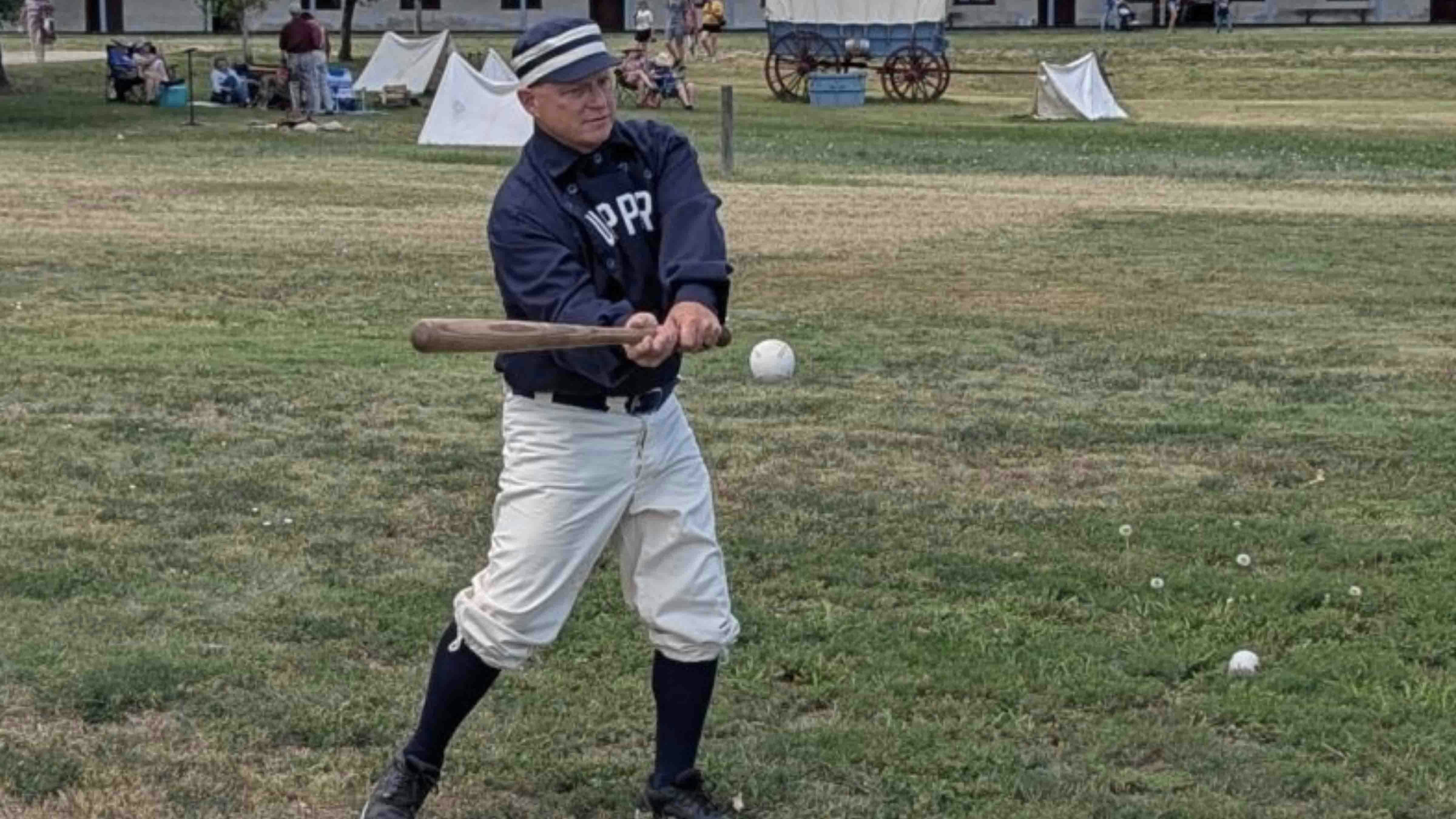The on-again, off-again stream in Swift Creek Canyon is a rare geological feature located about 5 miles east of Afton, Wyoming. So rare, it is probably one of only a handful in the world.
The natural spring cycles on and off at regular intervals, earning it the name Periodic Spring, or sometimes Intermittent Spring. Folklore often labels the feature “The Spring That Breathes,” and while that moniker sounds Native American-like, there is no evidence supporting First Nation peoples in the Star Valley area ever even knew of it.
What is known is that an ice-cold stream that is 100% drinkable runs down a mountainside one minute and dries up the next.
Thirsty? Fear not. The wait between flows is usually less than 20 minutes.
Springing To Life
Olympic gold medalist wrestler Rulon Gardner’s great-great-grandfather discovered this phenomenon in August 1894.
While logging up in Swift Creek Canyon just east of Afton, Bruce Gardner found an unnamed spring that fed Spring Creek to be very tasty to a parched logger. The trouble was the spring would be running full bore one minute and dried up the next. Its flows weren’t unreliable, just intermittent.
The spring is known as a “rhythmic spring.” There are reportedly only a handful of these in the world, and Periodic Spring is supposedly the largest.
The classification of Periodic Spring as a rhythmic spring remains an educated guess. This particular feature in Wyoming is often denoted as an underground cold-water geyser, but that’s not technically correct.
Cold-water geysers are a rare phenomenon known around the world. Germany’s Andernach is the highest spouting and the Herľany Geyser, discovered in 1872 in Slovakia, blows its top only once a day.
Cold-water geysers are similar to their geothermal counterparts like Old Faithful. The difference is, Old Faithful uses heat generated by a layer of basaltic magma to boil water to the steam-driven point it explodes to the surface.
Sometimes called soda pop geysers, cold-water geysers use underground pockets of CO2 to push water to the surface.
Crystal Geyser just outside of Green River, Utah, is probably the best-known of these. It was accidentally “created” in 1936 when exploratory oil drilling unknowingly tapped into a carbon dioxide-charged aquifer.
The underground nature of Periodic Spring near Afton means you cannot see the eruption spout. But you certainly can hear it as it gurgles in a cave perched atop a heavily-wooded hillside above Swift Creek.
Much like Old Faithful, a period of hissing and wheezing signals flow from the springhead is about to begin. Water then rises to the lip of the underground cistern and eventually spills over. What starts as a trickle is soon a roaring rivulet, cascading its way over moss-covered rocks to its confluence with Swift Creek a quarter mile below.
For about 15 minutes, all seems normal. A delicious-looking rill bubbles to life looking like it has always been there. Stick around, though. Once the underground reservoir empties out, the flow shuts off, the streambed dries up, and all is still once again for another 15 minutes.
How It Works
“Everything about this spring is somewhat surprising. It's an extremely unusual occurrence,” said Kip Solomon, a hydrologist at the University of Utah.
Scientists are not 100% sure what makes Periodic Spring do what is does, but they’ve made a fairly safe, educated guess.
Solomon has studied the spring probably more than anyone. He said the closest thing to it in behavior is a similar phenomenon in France.
He shared his best theory on how it works.
“As groundwater flows continuously into a cavern, it fills a narrow tube that leads out. As it pours over the high point of the tube, it creates a siphon effect, sucking water out of the chamber. Eventually, air rushes in and breaks the siphon,” Solomon assured.
Studies conducted by University of Utah in the mid-2000s confirmed no gas content in the water, strongly suggesting support for the siphon theory.
“We can't think of another explanation at the moment,” Solomon added.
The best time to view the spring turning itself on and off is from late August through November when the water table is at its lowest and the distinction between flows is at its most distinctive.
A similar rhythmic spring called the Ebbing and Flowing Spring can be found in Hawkins County, Tennessee, near Rogersville. That spring flows for a period of 2 hours and 47 minutes, ranging from an indiscernible trickle to nearly 500 gallons per minute.
Periodic Spring is very much like an artesian well. The pristine ice-cold water and can be safely consumed right out of the ground. In fact, the Periodic Spring provides part of the water for the town of Afton. That’s the reason for the cement hood placed over the mouth of the spring to prevent rocks and other debris from falling into the opening.
The spring feeds a torrent of water down Swift Creek Canyon to a hydroelectric plant, which supplies surrounding towns with electricity.
Getting There
Locate Second Avenue in Afton, then head east out of town. The road is paved for a mile or so and then turns into a well-maintained dirt road (FR 10211) for another 4 miles. On the way, you will notice a drinking water tank maintained by the town of Afton.
The road ends about 5 miles outside of town at a parking area. You can't miss the beginning of the trail at the far end. You are now in the Bridger-Teton National Forest, by the way.
The walk is only three-quarters of a mile on relatively flat terrain. To get to the spring, cross the Swift Canyon Creek to an area with a highly visible sign and a picnic table.
Want a close-up look at where the wellhead is? Begin the trek up along the left side of the rocky rill. Be extra cautious — the rocks near the top will be extremely slippery.
The whole area is refreshingly low-key and un-sensationalized. It is a wonder of nature, both remarkable and rare. Enjoy the serenity, tread lightly, and leave no trace.
Contact Jake Nichols at jake@cowboystatedaily.com
Other Stories In Cowboy State Daily's What The Heck ... Series:
What The Heck … Are Snow Squalls, And Where Do They Come From?
Why Is There A Bike On Top Of The Historic Lander Grain Elevator?
What The Heck … Is That Pile Of Teddy Bears In The Middle Of Nowhere Near Kemmerer?
What The Heck … Is Up With That Gillette House You Can Practically See From Space?
What The Heck Is … Ayres Natural Bridge, A Rare Wonder Everyone Drives By On I-25?
Who The Heck … Decorates That Tree In The Middle Of Nowhere North Of Sheridan?
Why The Heck … Does Green River, Wyoming, Have An Intergalactic Spaceport?
What The Heck … Is That Apocalyptic Ruined City On The Way To Yellowstone?
What The Heck … Is That 400-Foot Snaggle Tooth Rock North Of Rock Springs?
What The Heck … Is That Giant Mineral Dome In Thermopolis?
Why The Heck … Is A Camel The Mascot For A Wyoming High School?
What The Heck Is … That Old Stagecoach Stop Off I-80 Near Green River?
What The Heck Is … That Airplane On A 70-Foot Pole Along I-90 In Wyoming?
What The Heck Is … That 30-Foot Virgin Mary Statue On I-80 At The Nebraska Border?
What The Heck … Is That Giant Face On The Hill Overlooking Green River?
What The Heck Is … That 60-Foot Pyramid In the Middle Of Nowhere Off I-80?
What The Heck Is … The Vore Buffalo Jump Along I-90 In Northeast Wyoming?
What The Heck Is … With Betty Boop, Big Boy And That Sinclair Dinosaur North Of Cheyenne?
What The Heck Is … That Giant Abraham Lincoln Head Overlooking I-80 At The Top Of Sherman Hill?
What The Heck Is … That Lonely Grave On A Hill Overlooking Interstate 80?
What the heck is … That Lonely Tree Growing Out Of A Rock In The Middle Of I-80?
What The Heck Is … That Lonely Big Boy Statue In the Middle Of A Field In Wapiti, Wyoming?
What The Heck Is … That Giant 13.5-Foot-Tall Head On A Corner In Laramie, Wyoming?
Jake Nichols can be reached at jake@cowboystatedaily.com.













